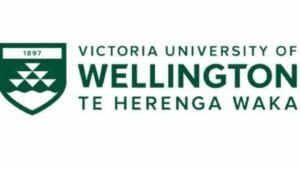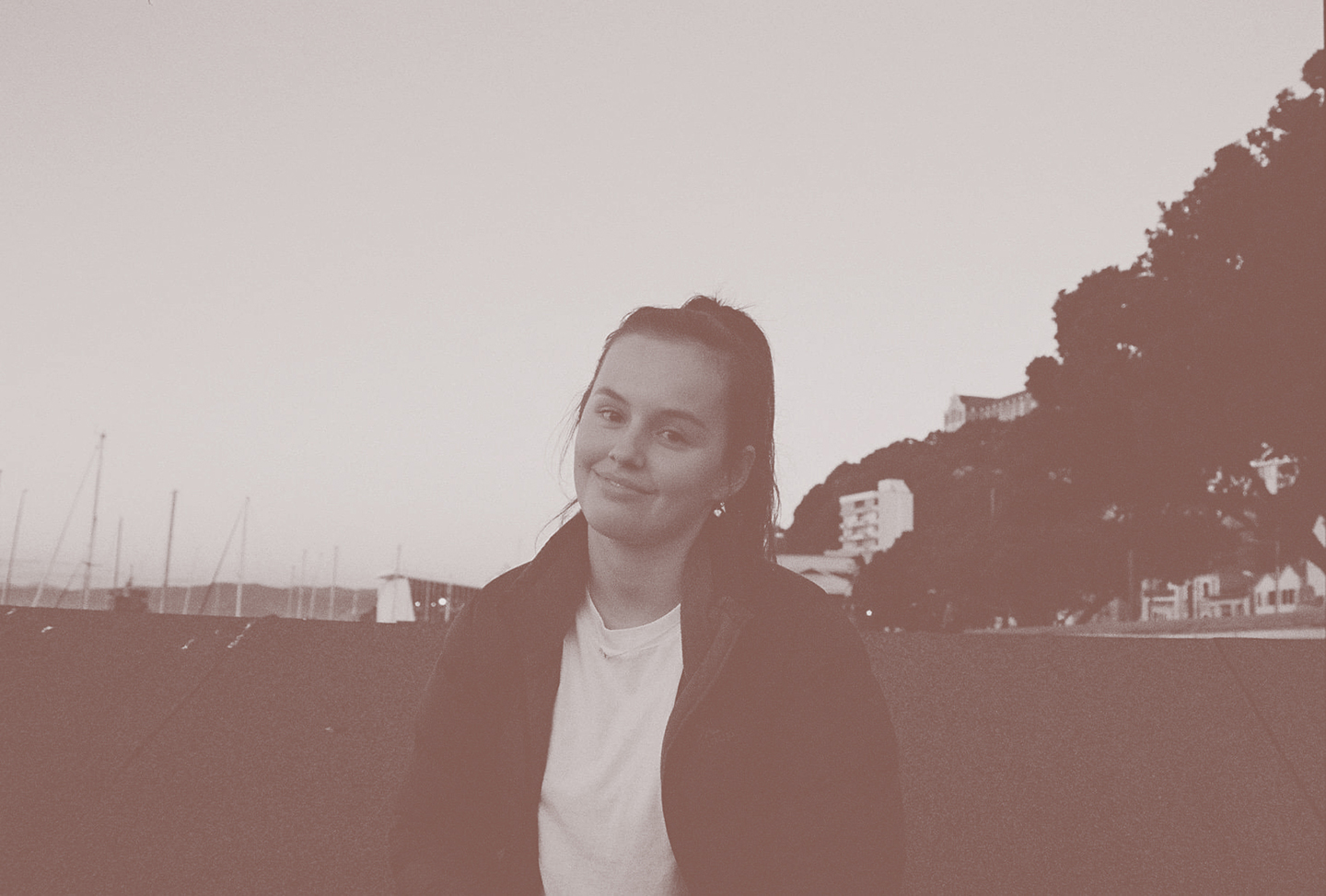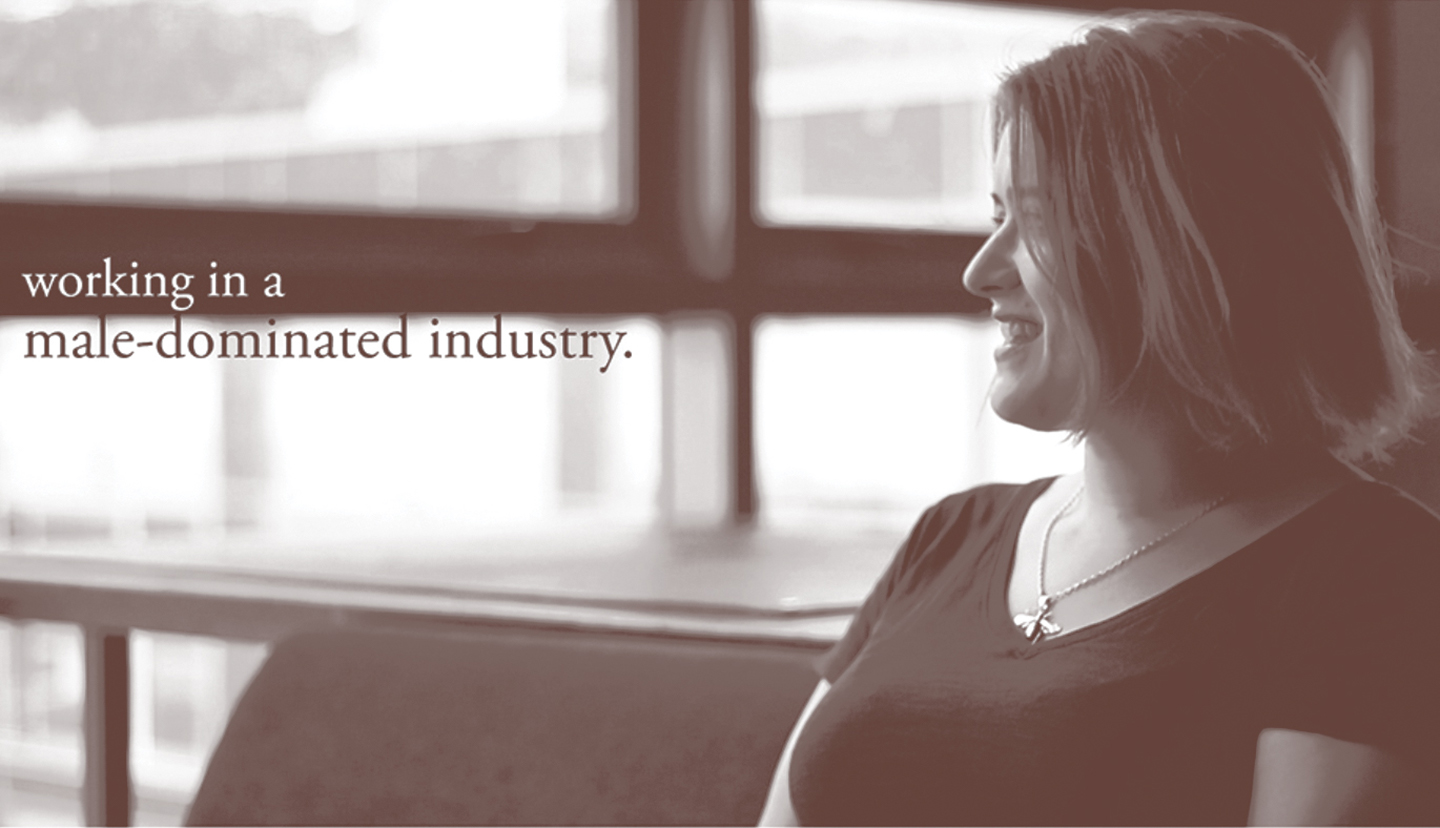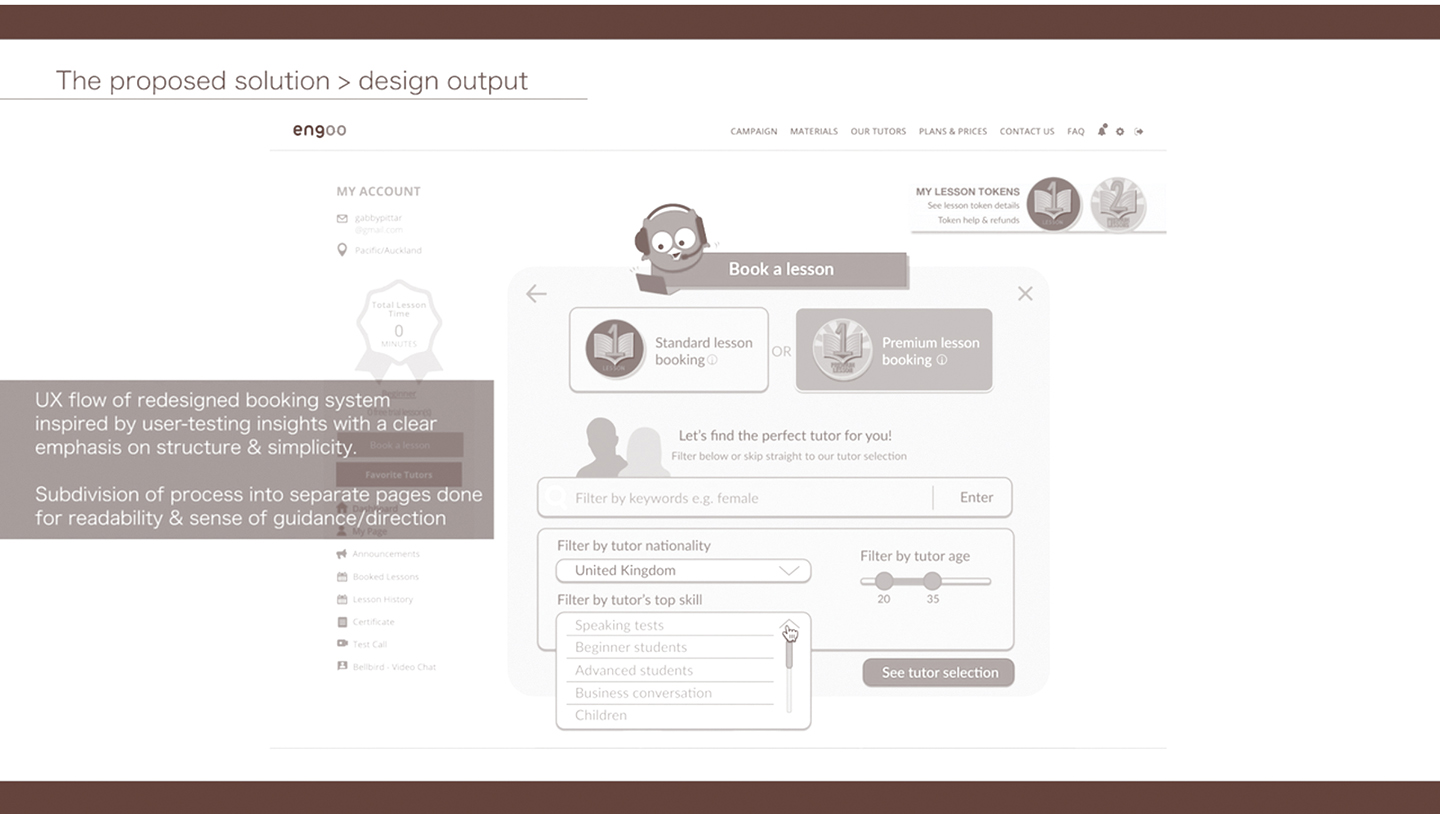Baggy Pants and Butter Paper… Gabby Pittar, Interaction Design
This interview is the fourth in a series from Hamish Besley (@hamo.b) a third-year student at Victoria University Wellington – Te Herenga Waka, Faculty of Architecture and Design Innovation. Each interview was first published in Baggy Pants and Butter Paper, an editorial publication for students by students (conceived in Hamish’s final year of study). The interviews explore each students pathway to design, choice of discipline, their unique personal narrative, experiences studying, the projects they take pride in, their challenges, inspirations and aspirations.

Today Hamish shares his interview with Interaction Design Major Gabby Pittar

BP&BP: Introduce yourself!
Hey, I’m Gabby – an Interaction Design and Marketing student in my final year (and final trimester) of my Bachelor’s degree at Vic.
BP&BP: What made you come to Victoria?
To be honest, I definitely picked the city before the university I wanted to go to. I was already set on moving out of home to make the most of my uni experience – I wanted to live in a Hall of Residence and spend that year really prioritizing building new friendships and switching up my daily routine in a new city – all the classic rhetoric you hear in every university marketing campaign really but it was true in my case.
So once I had chosen to go to Wellington and my degree (which was a Design and Commerce conjoint degree at the time) it was really a no-brainer to enroll at Vic, considering the only other option was Massey and their Wellington campus doesn’t offer BCom qualifications. Aside from all these factors, admittedly I was also reassured by Vic’s decent international status and their degree employability, but those things were kinda just an added bonus.
BP&BP: What made you choose design and the specific major?
All I really knew was that I was creatively-minded all throughout school – taking all the Design and Graphics-related subjects, but I also didn’t do too badly at Business subjects. Design was more of my passion, while Business was a practical thing, strongly encouraged by my parents hah. I did honestly think though, that the combination of Design and Business would give me a more well-rounded approach in both areas, and an employability boost from obtaining two distinctly different skill sets.
Choosing Interaction Design as a major wasn’t my plan when I started uni, partly because it wasn’t even offered as a major yet (we are the first cohort at the moment) but even if it was offered straight away I might have turned my nose up at it, because it originally sounded like it could be super techy or coding-heavy. Once I found out that isn’t necessarily the case, and really it’s all about problem-solving with real human issues, I was converted.

BP&BP: Did you ever question that choice?
Absolutely — I’ve questioned every aspect of my degree at some point over the past three years of studying. But I don’t think questioning and reflecting on your life situation is always a bad thing. Personally, I’ve had to realize that my dream job, no matter how amazing, will inevitably have highlights and lowlights. I’ve come to accept that it’s impossible to love every single day of a job, or study path in my case.
As I said, I started uni with a BDI and a BCom conjoint — which was going to take me something like 5 and a half years to complete. But during my first and second years of study I came to realize the prospect of 5 and a half years of study, only to come out of it with two undergraduate degrees, wasn’t really the smartest option for me. While I do agree that some business knowledge is important for almost everyone to have, I felt that I didn’t need to go through a BCom to acquire it. So I changed from a conjoint to a double major degree – a BDI majoring in Interaction Design and Marketing.
BP&BP: What project are you most proud of?
Last trimester I did an Interactive Products course, and honestly put my blood, sweat, and tears into that final project. My focus area was in facilitating the rehabilitation of people with stroke and more specifically helping those who suffer with upper-limb spasticity (involuntary muscle stiffness) as a result of their stroke. I did a bunch of research into peoples’ lives after stroke, their physical limitations, and psychological effects, and then spoke to an Occupational Therapist and Masters’s student – both having experienced working alongside people with stroke.
This all resulted in a set of 3D-printed door handle attachments, which could be layered up or stripped back to create progressive levels of difficulty when using a twist-knob door handle around the home. This progressive difficulty – from ‘beginning, to ‘intermediate’ and then ‘advanced’ level, encouraged rehabilitation over time, as the surface area and traction of the door handle at each level became slightly smaller and harder to grip.
I think the healthcare focus of this project, and the underlying premise of improving someone’s quality of life made this project so much more gratifying and motivating to really dive into than others.
BP&BP: What project are you least proud of?
Honestly, I’m not all that proud of a lot of my first-year projects, particularly those that were coding-based. I haven’t had much luck with learning code – it’s a massive challenge for my brain and I found myself getting so frustrated to the point of tears (haha yup) when I broke the entire code after hours of fiddling around with it. I’ll admit that I tend to give up and settle for the bare minimum with coding, so those projects I’m least proud of because I know I could’ve probably achieved more if I really tried.
BP&BP: What is the hardest project you’ve worked on?
Anything coding related – maybe building a personal portfolio website from scratch in second year, or maybe when I tried to code a digital coloring book in first year. Traumatising.
BP&BP: What motivates you to get up and grind?
Black coffee and a massive bowl of decked-out oatmeal in the morning. Also my classmates, who feed me all sorts of cool project ideas I would’ve never thought of myself.
BP&BP: What is the highlight of your working week?
I’m a sucker for a good to-do list and being able to cross tasks off, no matter how menial, makes me feel like I’m achieving something. Like any designer, I also love the feeling of finally finishing a big project but on a weekly basis, I’d say my to-do list and just having really good collaborative chats with classmates while working would be my highlights.
BP&BP: Outside of school what do you do?
I’m notorious for biting off way more than I can chew… I really love videography and filmmaking as a bit of a freelance side-gig – so I’ve been creating video content for festivals (pre-covid that is), music gigs, corporate events, and small business promotions for the past 4 years.
I also work for a small New Zealand fashion start-up, set to launch very soon actually, where I’ve been really lucky to gain a bit of an inside scoop into how to get a new business off the ground. I do a bunch of marketing-related tasks, consumer research, and a little bit of web design.

BP&BP: Do you think that affects your practice at all?
Definitely, Interaction Design ties in really nicely with video and marketing – I’ve found there’s a lot of overlap and they build off each other. My video and marketing knowledge has made me a more well-rounded UX designer than if I didn’t have those skill sets, which I’m really grateful for.
The Marketing courses I’ve done have given me a lot of insight into consumer behavior and basic human psychology, which I’ve been able to pull into my Design projects to enhance the user experience – targeting the right audience with a relevant solution to their problem. On the other hand, video is a really prevalent and effective form of marketing communication – especially with social media and eCommerce these days. Video tends to be so much more engaging than static imagery, and so I try to weave it into my Interaction Design where possible – whether that be in the animation of certain design elements in a prototype, or showcasing a physical product design in a video.
BP&BP: What values/ideologies do you carry across your practice?
I can’t say I consciously carry a defined set of values or ideologies across my practice, but I’d say I subconsciously translate my own personal values into the things I create. For me, design is simple. It’s about setting aside all of my biases and personal experiences, and putting myself in the shoes of the end-user to design the right thing for them – when, where, and how they need it.
Of course in order to be a decent designer you’ve got to be a decent human too – so I’d say my core values would be centered around authenticity and transparency. Obviously, the environmental implications of my actions as a designer is also something I think about whenever I’m designing anything tangible, so sustainability is another really significant influence on my work.

BP&BP: While at design school, what’s the hardest lesson you’ve learnt?
Somewhat harsh, but I’ve had to learn that no one is going to hold your hand and guide you through your degree or career or really ‘adulting’ in general. If you wait for something to fall into your lap, more often than not you’ll be disappointed. I felt kind of disheartened when I realised that no one truly cares about my studies or career or life as much as I do, but it makes complete sense – as confrontingly blunt as it is, everyone’s out there for themselves for the most part. This doesn’t mean you can’t find good people out there who will genuinely care for and support you, but when it comes to really making shit happen you’ve gotta hold yourself fully accountable.
BP&BP: What was the best lesson?
On the flip side of my hardest lesson, the best lesson I learnt was accountability. Not just accountability in terms of showing up to class or completing the assignment, but accountability in the way I approach challenges and actually go after opportunities. For me, it was the mindset shift of going from ‘that’s too hard/risky, I’ll just opt for the safe route instead’ to ‘if I want it bad enough I can teach myself how to do pretty much anything’. Super cliche but yeah – uni has forced me out of my comfort zone and with that, boosted my confidence in my own abilities to learn (not necessarily master, but learn) almost anything.
BP&BP: If you could give your past self any advice what would it be?
I guess my advice to my past self would be something along the lines of – don’t even bother stressing out about what you’re going to do with your life, because you still have no fucking clue. I’d say to prioritise building a support network of peers and lecturers so you feel less alone when the trimester gets tough. And I guess I would try to put things in perspective for first-year me – university isn’t the ‘be all and end all’ and I don’t think it should completely consume our lives. I would remind myself that this stage of life I’m about to enter is pretty overwhelming, but it’s one that I’ll never be able to relive again once it’s gone. Shifting the focus away from uni sometimes can be a really good and healthy thing to do – whether that be to socialise, work on a passion project, go on a road trip for no reason or pick up a new hobby.

BP&BP: What are you working on now?
Pretty insane to think that I’m working on my final two design projects of my undergrad at the moment – one of which is mostly product design while the other is focused on UX research and a bit of web design.
The first is an oil bottle, designed based on psychological research into portion control, which aims to subconsciously reduce the quantity of oil used while cooking. We’re currently in the process of 3D printing this, and will be carrying out some pretty extensive usability testing shortly to see if it really does subconsciously reduce oil usage.
The second is essentially a lot of user experience research and website prototyping for a PhD student’s pre-existing project here at Vic. Her work tackles the common issue of ill-fitting bras in women, and aims to provide a solution via digital designing and manufacturing.
Outside of design, I’m finishing up my marketing major with a course in Social Marketing – which is essentially marketing to induce desirable behaviour change for greater social good. So I’m designing a social marketing campaign that seeks to educate and encourage speaking out against workplace gender-based discrimination in relation to the gender pay gap.
BP&BP: Where do you want to go from here?
I honestly have no expectations for my future at this point, unfortunately, no OE for a long time considering the state of the world at the moment and international travel being off the cards. In the short-term, I’m tossing up the idea of sticking uni out for another 18 months to gain my Masters and admittedly delaying entering the workforce. In the long-term, I just want to find a job that provides me with financial comfort and, more importantly, the ability to improve peoples’ quality of life through better design.
Learn more about Gabby
Instagram: @gabbypittar
Website: www.gabbypittar.myportfolio.com
Learn more about Baggy Pants and Butter Paper here https://baggypants.info/Issue-One-The-Tester and follow them @Baggy.pants.and




